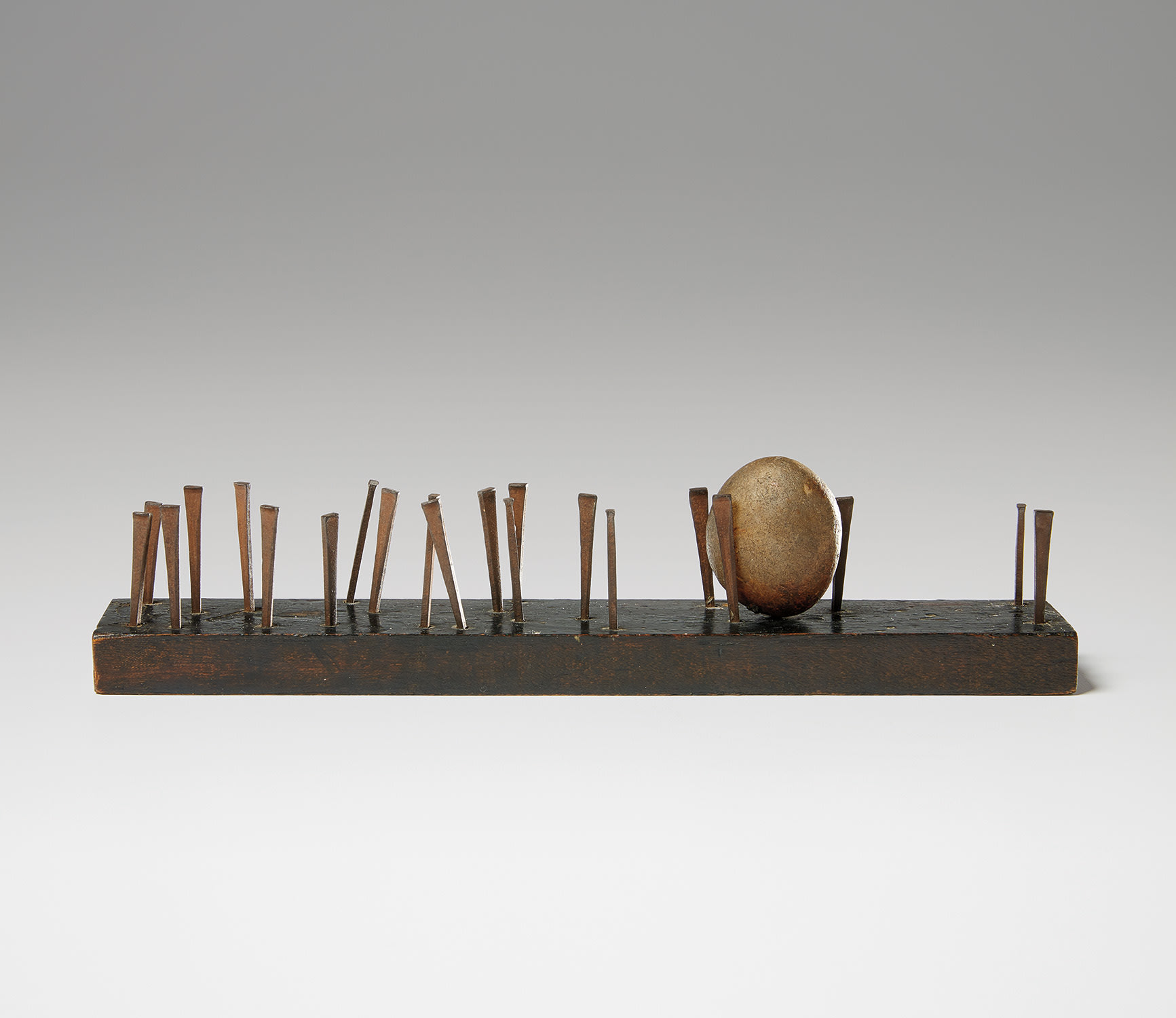

Property from the Collection of Elizabeth Stokes
39
Robert Rauschenberg
Untitled (Elemental Sculpture)
painted wood with masonry nails and stone
2 3/8 x 10 x 1 5/8 in. (6 x 25.4 x 4.1 cm)
Executed in 1953.